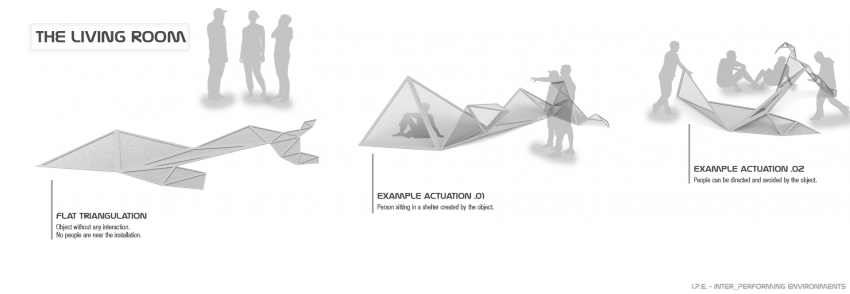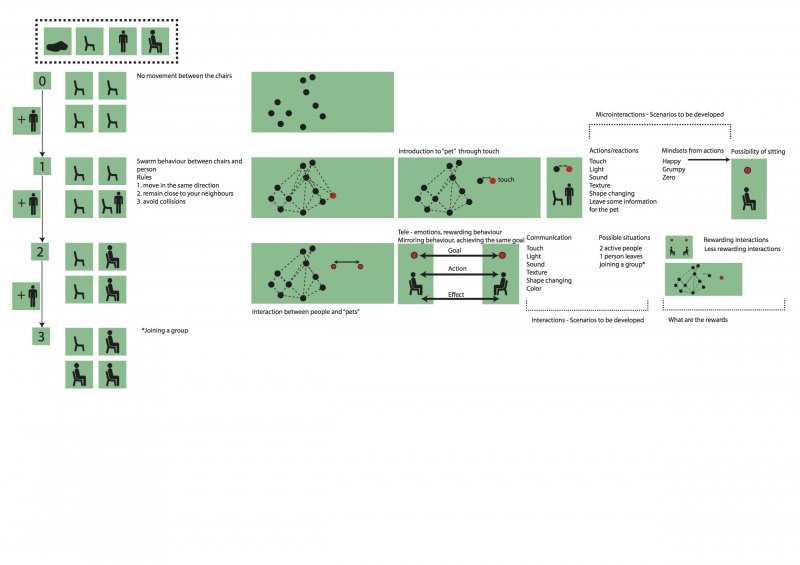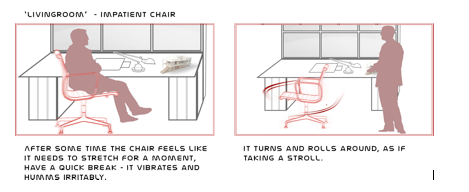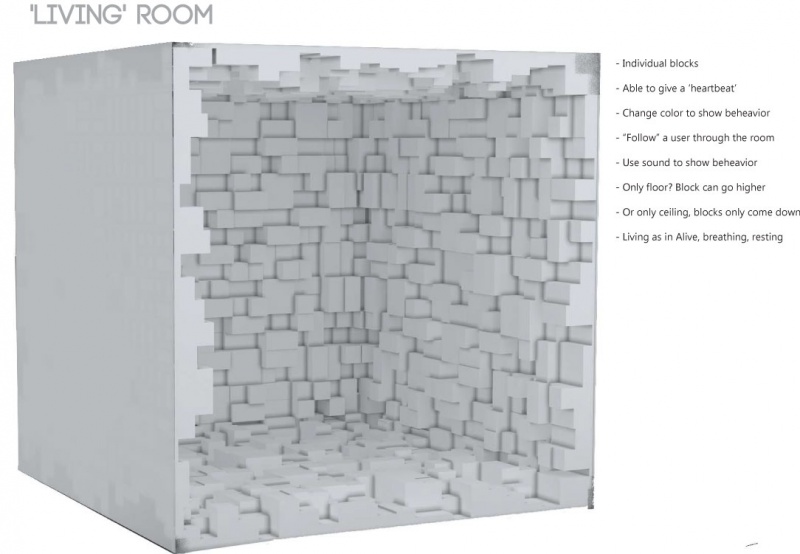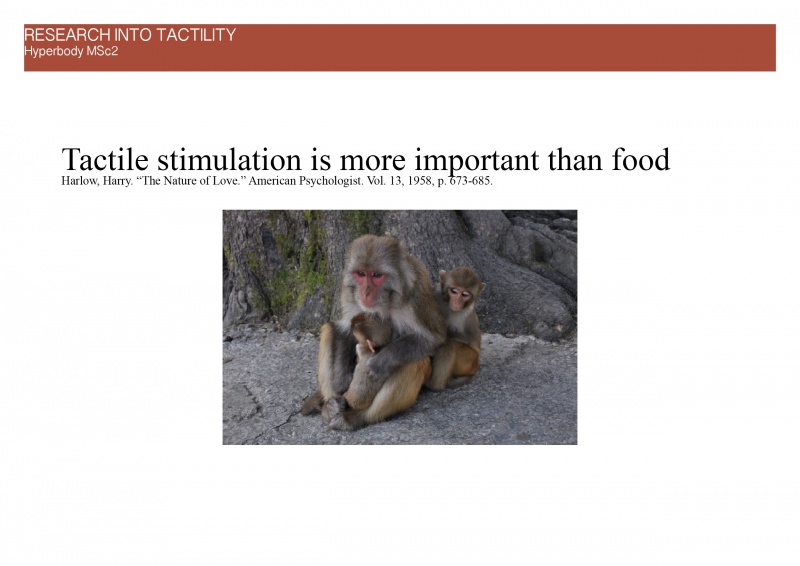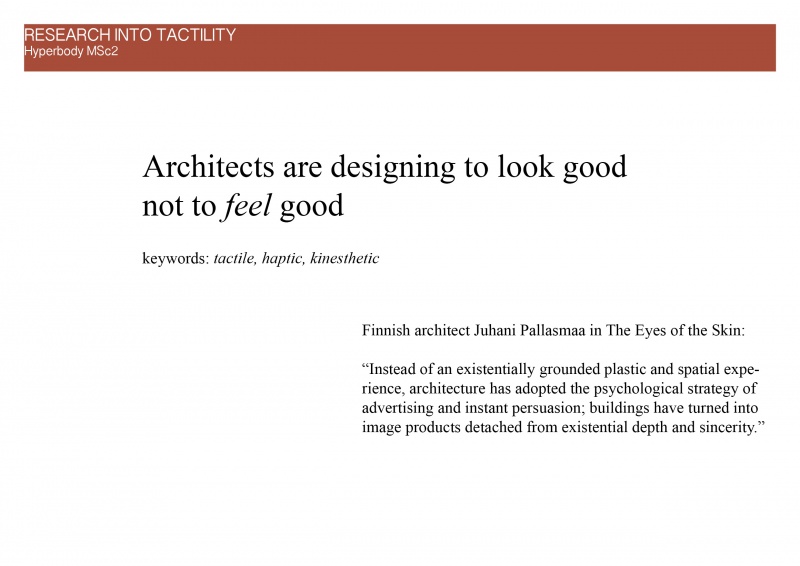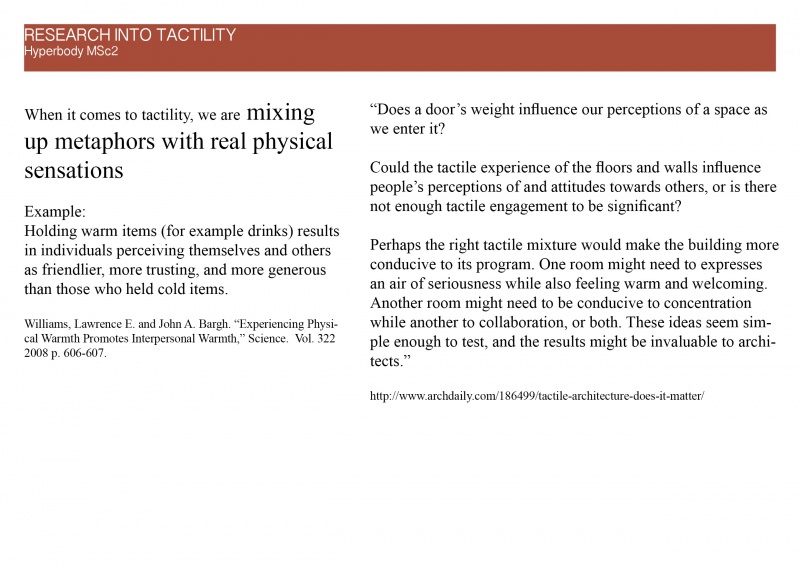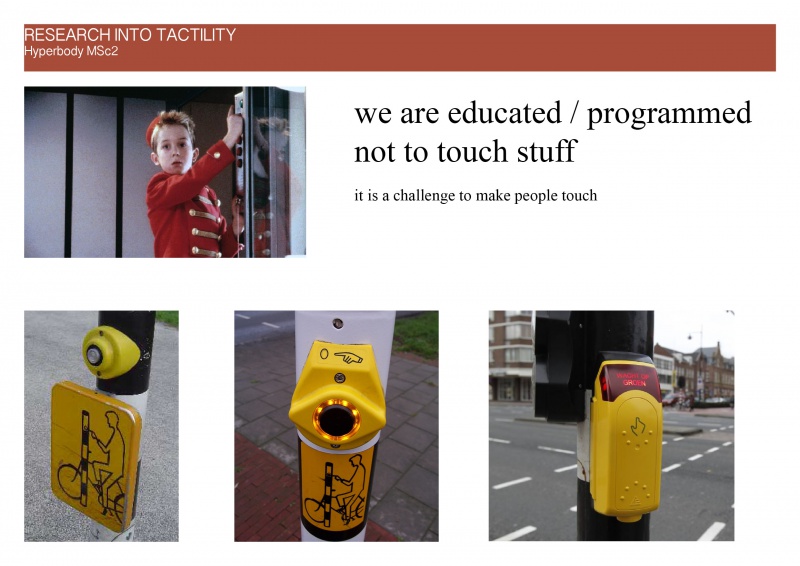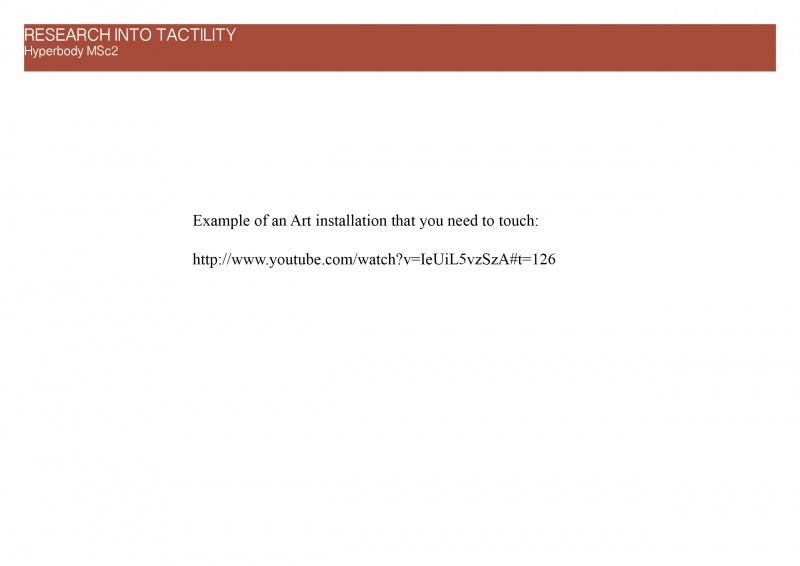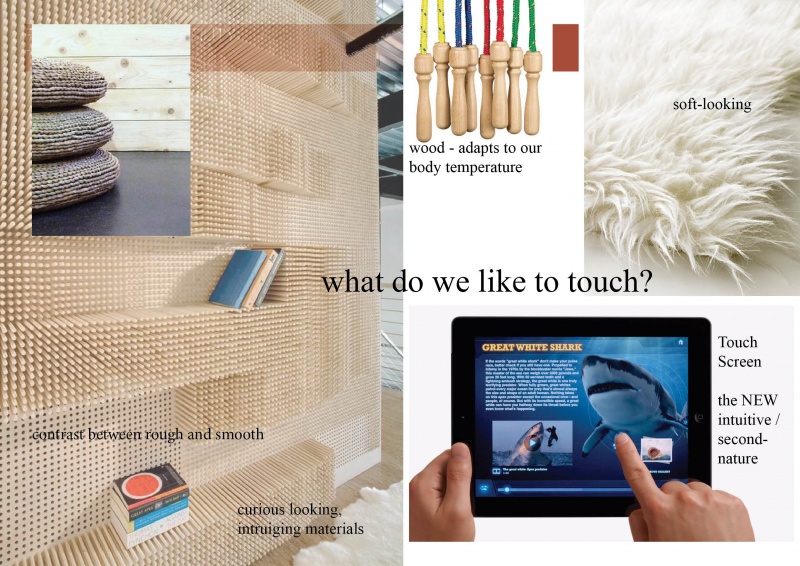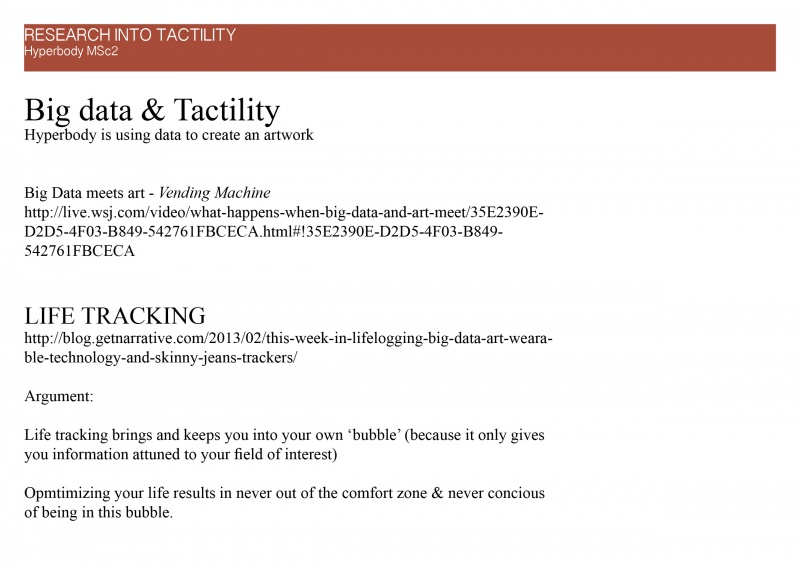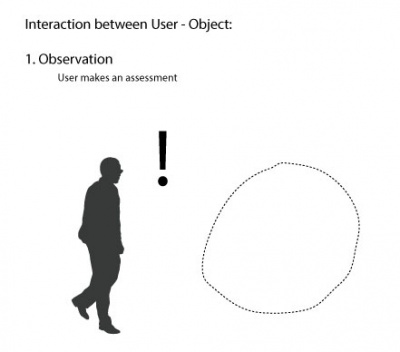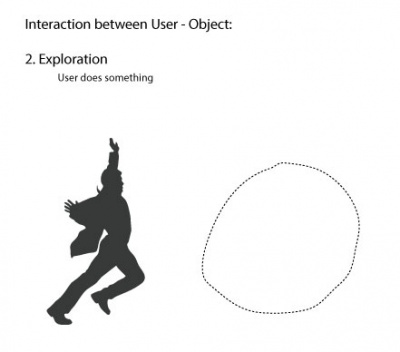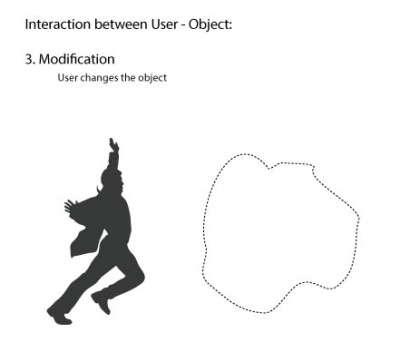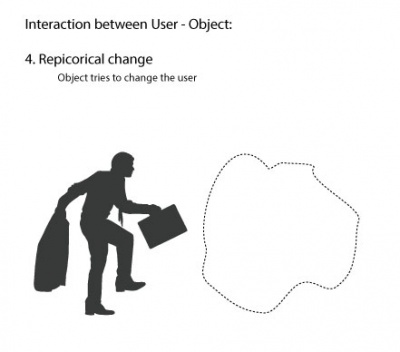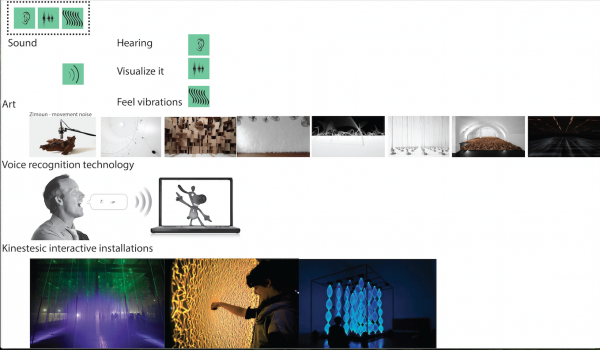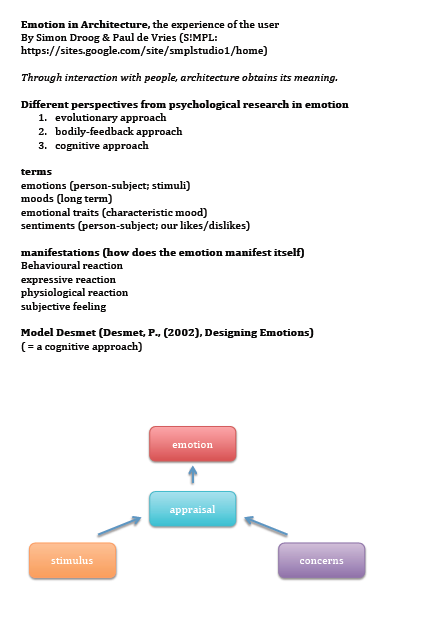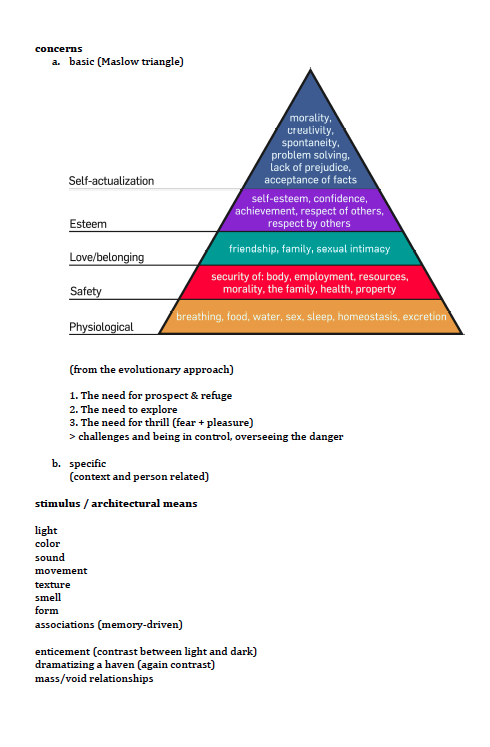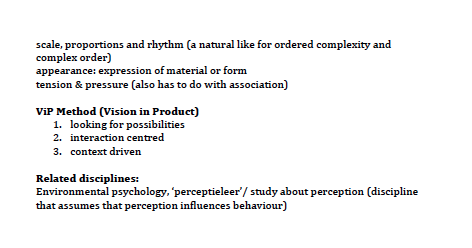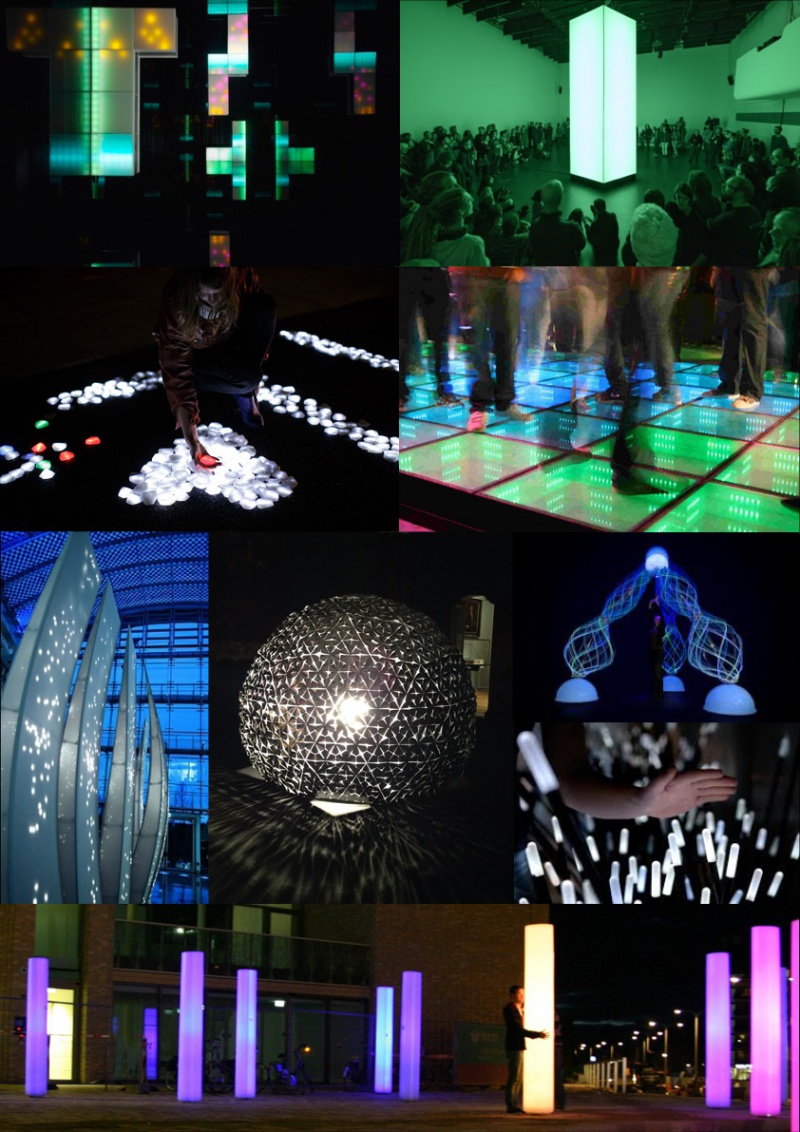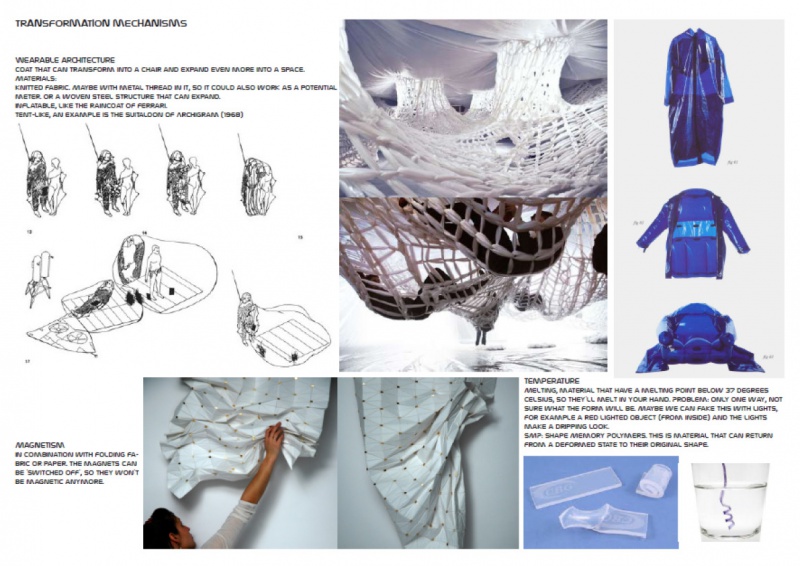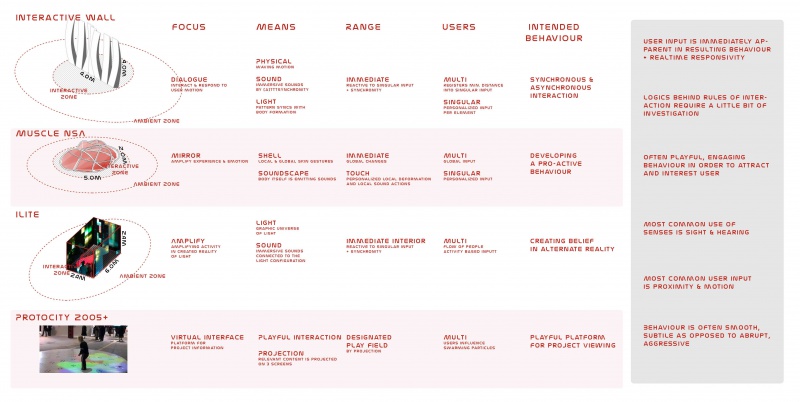project02:CASE STUDIES
CASE STUDIES
Case Studies:
Variations(OLD)
Chairs are designed and manufactured by man in order to serve a very specific purpose, to be sat on. The relation between a chair and its user is very one-directional, subservient, where the chair is the lesser of the two. By giving anthropomorphic qualities (and some sort of intelligence to act upon) to objects and environments the user might take a different perspective and approach in treating or using these objects. The intent is to stimulate a more give and take, bi-relational interaction. Both participants (object and human) being more or less equal in their relation. The chair might just want to stretch its legs and go for a stroll after a while of being sat upon, it could even reward its user with a massage for certain behaviour.
Imagine an entire living room filled with animate objects, an abundance of social interaction between you and your house, altering the conventional daily routine.
The theme of giving objects or animals live-like characteristics or even human behaviour isn’t particularly new – many examples can be found in animated movies such as ‘ Beauty and the Beast’ , ‘ Alice in Wonderland’ , ‘Aladdin’, ‘ Cars’ and of course the Pixar lamp from ‘Luxo Jr’. Artificial Intelligence: J.A.R.V.I.S. (Iron-man), Cortana (Halo), Her (movie about falling in love with your artificial intelligent assistant)
Variation_02_Living_Room
Variation_03_Living_Room
Research
Research Subjects: Tactility, Interaction, Sound, Emotion, Light, Transformation, Materialization
Research_01_Tactility
Research_02_Interaction
Research_03_Sound
Research_04_Emotion
Research_05_Light
(from: Lighting: Its effect on people and spaces – Ginthner, D.)
• People are like moths: they will follow the brightest path
• Brightness can focus attention
• Lighting can affect body position
• People like to face walls that are illuminated
(from: The influence of colour and scent on people’s mood and cognitive performance in meeting rooms – Hulshof TU Twente 2013)
• Colour: hue, brightness and saturation
• In general bright colours > positive feelings, dark colours > negative feelings
• Meaning of colours is learned or determined by nature
• Warm colours, like red, make the level of stress and anxiety go up
• Cool colours, like blue, work more relaxing
Reference projects
1 iLite - Hyperbody
RGB LEDs creating lines and dots, reacting to the movement of people inside a container. The movement changes the pattern and density: more activity, more intense graphic (and audio) output. When there is nobody inside or no movement, the lights will fade out with a few twinkling dots.
2 Common structures - Matthijs Munnik
Stroboscope: flickering light in different colours. Inspired by the Dream machine of Brion Gysin and William S. Burroughs. With the flickering lights it wants to change the way you are thinking on that moment and bring you in another state. But there is no interaction or reaction.
3 Crystal - Studio Roosegaarde
First version only white LEDs, second with different colours that can dim and flash. It reacts when it is moved over a magnetic field, then it will be turned on for a while.
4 Sustainable dance floor - Studio Roosegaarde
Different colours. Floor elements light up when there is enough electricity. Electricity can be produced by dancing on it: by squeezing the element down.
5 Interactive Wall - Festo and Hyperbody
One colour LED (white), dimmable, inside the wall. Reacts to motion of the wall(element). When it is moving faster, more lights will go on.
6 Lotus (dome)- Studio Roosegaarde
White light from the lamp in the middle. The foil reacts to warmth (body, breath), but the lamp reacts to the place of people in space. Then the lamp will shine the light on that person and thereby warms the foil on the same place: it will open. In state zero the lamp is shining upwards. When an user is not moving any more, the lamp will dim out. It makes users aware of the room.
7 Liquid Space - Studio Roosegaarde
Different colours, in the upper sphere and in the ‘legs’. Not dimmable. Starts to react when a person stands underneath it. The different colours are chosen randomly.
8 Dune - Studio Roosegaarde
White LEDs that can be only on or off. The lights will follow the motion of the users or when someone is moving fast or screaming it will go ‘crazy’: it starts flashing.
9 Sensor Valley - Studio Roosegaarde
Different colours, reacts to touch and motion. Dimmable and flashing, but (at first sight) no real connection between the use of colours.
Research_06_Transformation
Reference
To add: Research Iris about Daan Roosegaarde
